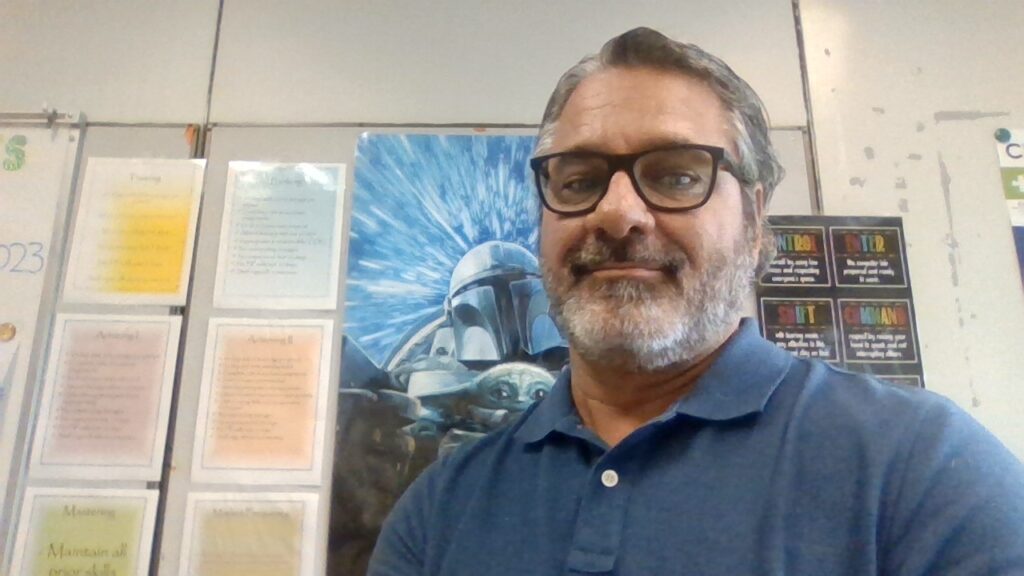By: Dan Jones
Introduction
As an ESE computer science teacher, I have made it my mission to ensure that all students have the chance to explore the amazing world of computer science. A disability shouldn’t limit your educational opportunities. You cannot spell disability without ability. Everyone deserves equal access to education, and accommodations should be provided to ensure that individuals with disabilities can thrive in this field of study. I feel extremely privileged to have been selected to participate in a yearlong UDL4CS (Universal Design for Learning Computer Science) educational cohort training program. Through this program, I met Dr. Maya Israel and Dr. Joanne Barrett from the University of Florida and have learned how to implement and continually apply the UDL4CS guidelines in my classroom.
In the rapidly evolving landscape of technology, computer science education has become a crucial component of a well-rounded curriculum. However, ensuring equitable access and participation in computer science for special needs students remains a challenge (Stark, Reich, 2023). This article explores the equity gap in computer science education and highlights the importance of Universal Design for Learning (UDL) and other strategies in creating an inclusive learning environment.
The Equity Gap
Special needs students often face barriers in traditional computer science classrooms, hindering their ability to fully engage with the material. From physical challenges to diverse learning styles, these barriers contribute to an equity gap in computer science education. Special education is often left out of the decision-making process when it comes to technology and other academic pathways (Stark, Reich, 2023). To address this, educators must adopt inclusive approaches that cater to the unique needs of every learner.
Universal Design for Learning
UDL is a framework that aims to create flexible learning environments that accommodate diverse learners. In the context of computer science, UDL involves providing multiple means of representation, engagement, and expression. For instance, incorporating visual aids, auditory resources, and hands-on activities can enhance comprehension and participation for special needs students (CAST, 2018). Incorporating a UDL approach to computer science education at my special needs school has helped me to open the doors of computer science for my K-12 students.
Breaking Down Lessons
1. Visual and Auditory Representation: Utilize visual aids such as infographics, diagrams, and videos to supplement textual information. Provide audio descriptions for visual content to support students with visual impairments (CAST, 2018).
2. Hands-On Activities: Incorporate interactive and tactile elements into lessons to engage students with different learning preferences. Use physical computing tools or adaptive technologies to enhance hands-on experiences (CAST, 2018).
3. Adaptive Resources: Offer personalized learning materials based on individual needs. Provide access to assistive technologies, such as screen readers or speech-to-text tools, to accommodate diverse learning abilities (CAST, 2018). I like to use text-to-speech whenever possible. The learning platform my district uses has the ability to enable this function, I enable it for every assignment.
4. Flexible Assessments: Implement varied assessment methods, allowing students to demonstrate understanding through different modalities. Consider project-based assessments that showcase practical application of computer science concepts (CAST, 2018).
5. Collaborative Learning: Foster a supportive and collaborative learning environment where students can learn from each other. Encourage peer mentoring and group activities to enhance social interaction and cooperation (CAST, 2018).
Bridging the equity gap in computer science education for special needs students requires a holistic approach. Universal Design for Learning, along with other inclusive strategies, plays a pivotal role in creating a supportive and accessible learning environment. By embracing diverse learning styles and addressing individual needs, educators can pave the way for a more equitable and inclusive future in computer science education for all students. As I enter my third year of teaching computer science, I am extremely excited to write that this year my high school special needs students are taking AP computer science for the first time ever at my school.
References
CAST (2018). Universal Design for Learning Guidelines version 2.2. Retrieved December 30, 2023 from http://udlguidelines.cast.org
Stark, A. Reich, S. (2023) “What about special ed?” Barriers and enablers for teaching with technology in special education [electronic version]. Science Direct, 193, 1-17. Retrieved January 6, 2023, from https://www.sciencedirect.com/science/article/pii/S0360131522002366#abs0010
About the Author

Dan Jones is in his third year of teaching computer science and sixth year of teaching special needs students at Whispering Pines Educational Center in Miramar, Florida. He takes great pride in connecting the world of computer science to his student’s everyday lives. He is a graduate from Florida International University with a master’s degree in higher education administration. He is also a doctoral candidate in K-12 organizational leadership. Dan’s true passion is his love of education and his desire to elevate his students to the next level of their educational journeys. He is committed to creating a career pathway program for his students and helping them find out what their passion for the future is. He brings a diverse technical background to classroom having spent 22 years as a Cadillac and ASE certified master technician. He is relentless in his pursuit of learning and teaching computer science and is currently working on completing the requirements for a STEM teaching fellowship at Florida Atlantic University. He is a 2023 CSTA Teaching Excellence regional award winner. He is the robotics and Esports coach at his school and hosts gaming tournaments for his students when they are not competing against other schools. He recently won a gaming lab, seven Alienware Gaming Computers through High School Esports League (HSEL) and is having a blast teaching AP computer science this year. He believes that everyone can learn computer science.

